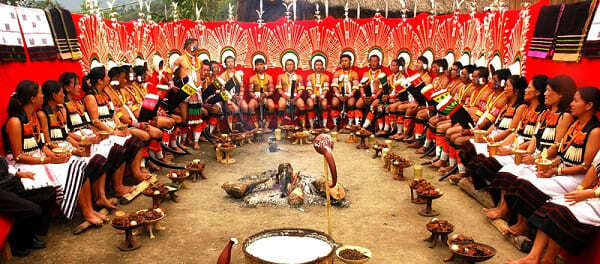

Scheduled tribes are the downtrodden communities in India and they are named Adivasis. They make up around 8% of India's total population and are the most disadvantaged segment regarding social, economic, and other factors. The Indian government is working to level the playing field for these tribes in terms of conventional growth with the rest of the country. A comprehensive and in-depth examination of tribal life is known as a tribal study. Tribal studies help to better understand the difficulties relating to tribal development from a variety of aspects in the context of globalisation.

Anthropological studies have begun with the examination of rural populations all over the world.Anthropologists have focused heavily on rural development and social transformation since the beginning of the academic field. It takes a comprehensive approach to identify the needs of a certain group, village, or ethnic background.
They believe that social interactions, social structures, and development are related. The development signifies a systematic transition of an organism or a social point of view from a less integrated state to a higher condition of functioning. Anthropologists typically viewed development as a level of society that meets the needs and security of the citizens, while continuously adapting to shifting ideas about life to a happy life.
The following are some of the main difficulties that India's indigenous people endure −
Natural resources are the main source of income for tribal groups. But they were forcibly relocated under colonial administration once minerals and other riches were found in the tribal lands. These areas were placed under state administration and it has a detrimental effect on the tribal lifestyle from independence.
Tribes are now compelled to reside either on the outskirts of the larger firms or to relocate to urban areas in search of work because they are evicted from mining communities and the growth of nearby businesses.
The tribal community has experienced a variety of health issues as a result of the existing poverty, economic stress, and illiteracy. They typically are living in slums and in unclean conditions, which makes them vulnerable to illness.
Tribal studies have dramatically improved social and cultural anthropology from its initial conception. However, it has developed into a distinct area of research. Since the Independence of India, the government has made an effort to bring the tribe at par with the rest of the people in India in every sphere of their life.
Tribes should participate in instruction, research strategies, application, documentation, and distribution for their improvement as well as for the government's technological improvement and development projects. The country also makes an effort to provide individuals with a useful environment and seek to develop their inherent potential.
Furthermore, particularly in the area of tribal studies, it is impossible to analyse them effectively without the need for a qualitative appraisal and awareness of their limitations. Numerous studies have been done, and these have shown that various tribal issues require consideration.
Rural development is an approach that improves living circumstances in rural regions by bringing about several quantitative and qualitative modifications.
The program comprises the renewal of accessible wasteland, the requirement of commercial fertilisers and improved seeds, the reinforcement of fruit and vegetable crop production, better agricultural technique, the promotion of sustainable implements, the allocation of soil surveys, and the avoidance of soil degradation, the motivation of using organic and food scraps fertilisers, and the advancement of livestock.
The program comprises the supply of agricultural irrigation to provide irrigation facilities using small irrigation systems, such as reservoirs, streams, water wells, bore wells, etc.
The public projects support social education, secondary and primary schooling expansion, and development. All phases of the educational curriculum should emphasise technical and occupational training.
The health organisation offers primary medical care in the developmental blocks and a secondary health centre in the project area's administrative centre that serves the entire area. It is furnished with a clinic and a mobile dispensary.
The rural transport network is created to connect all villages up to a maximum length of half a mile by road networks. Roads should be funded and kept by the government or other organisations.
The expansion of cottage and micro enterprises, the building of industrial facilities and sawmills, and the reassurance of employment through involvement in the tertiary segment of the economy provide meaningful employment for the unemployed and underemployed in rural society.
A relatively recent field of study in the human sciences is tribal studies. It has been linked to social anthropology from its birth. Studies from the sector have addressed issues related to their heritage, social system, polity, capitalist model, school, etc. The elimination of poverty and unemployment are the two main factors contributing to rural poverty in India. It is considered to be the overall objective of regional development in that country.
Q1. How can anthropology solve social problems?
Ans. Applied anthropologists use anthropological concepts and methodologies to address problems that arise in the world. For example, they might assist in resolving environmental, educational, or health-related issues in surrounding communities. Specialists assist with historical interpretation in museums, nature reserves, and city parks.
Q2. Who are called tribes?
Ans. A tribe is a set of people who coexist in a closed society and have a common heritage and culture. However, this is rarely the case, people typically reside in underdeveloped nations or regions where they avoid industrialization and rely solely on agriculture.
Q3. Why is tribal education important?
Ans. Education contributes to the inner power of tribal societies, which aids them in overcoming new problems in life, as well as the economic growth of tribes. Tribal people's economic realities are so dire that they do not incline to protect their kids or their workforce by letting them go to education.